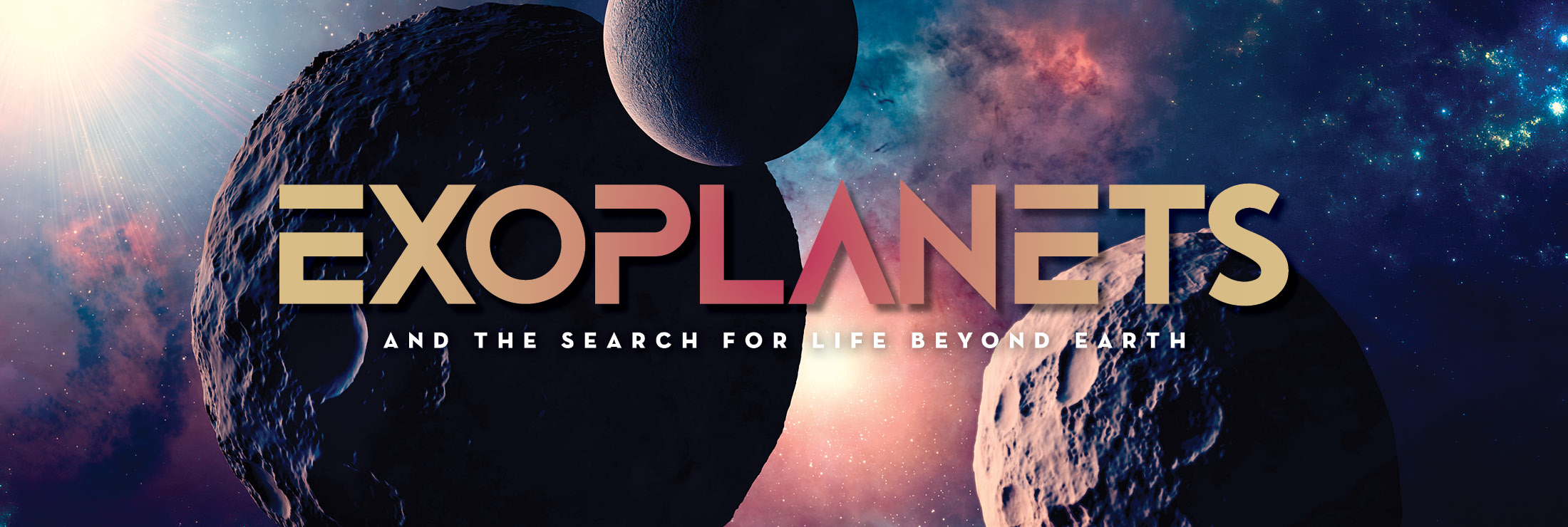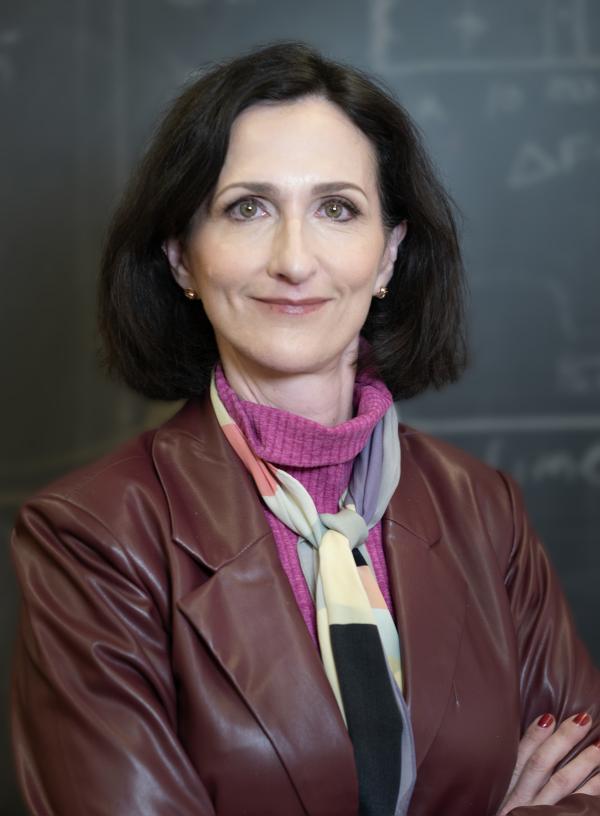Kay Malmstrom Lecture in Physics

About the 2024 lecture
People have wondered what lies beyond Earth for thousands of years, inspired by the star-filled dark night sky. Today, the search for signs of life is a critical factor in modern-day planetary exploration. Astronomers have found thousands of planets that orbit nearby stars, called “exoplanets.” The newly launched James Webb Space Telescope will enable us to study gases in rocky exoplanet atmospheres, including gases that might be attributed to life. Professor Sara Seager will share the latest advances in this revolutionary field.
Past lectures
| 2023 | “Building a Quantum Computer,” John Martinis PhD, professor of physics at the University of California, Santa Barbara |
| 2022 | “Cosmic Messengers from Cosmic Accelerators: Theories and Mysteries of ‘Cosmic Ray’ Proton Particles,” Ellen Gould Zweibel PhD, William L. Kraushaar Professor of Astronomy and Physics, University of Wisconsin-Madison |
| 2021 | “An Evening on Dark Matter Particles,” Elena Aprile PhD, Columbia University |
| 2020 | “Microscopy in Motion: Understanding How Crystals Grow Through Electron Microscopy Movies,” Frances M. Ross PhD, Columbia University |
| 2019 | "A Random Walk through Physics to the Nobel Prize," Dr. J. Michael Kosterlitz, 2016 Nobel Prize Laureate in Physics for work on the Kosterlitz-Thouless transition |
| 2018 | "Mixed-Dimensional van der Waals Heterostructures for Electronic and Energy Applications," Dr. Mark C. Hersam, Northwestern University |
| 2017 | "What Can We Do with a Quantum Liquid?" Dr. Anthony J. Leggett, University of Illinois at Urbana-Champaign, 2003 Nobel Laureate for work on superfluidity |
| 2016 | "Soft Electronics for the Human Body," Dr. John A. Rogers, Northwestern University |
| 2015 | "More Than Moore: When Electronics Drive off the Roadmap," Dr. Mark A. Reed, Yale University |
| 2014 | "Relativity, Quantum Physics, and Graphene," Philip Kim, Harvard University |
| 2013 | "Innovating Your Own Future," Roger H. Appeldorn, 3M |
| 2012 | "When Freezing Cold is Not Cold Enough: New Forms of Matter Close to Absolute Zero Temperature," Dr. Wolfgang Ketterle, MIT, 2001 Nobel Laureate for research on Bose-Einstein condensation |
| 2011 | "Exploring the Warped Side of the Universe," Dr. Nergis Malvalvala, MIT (spring) |
| 2011 | "E=mc^2: Opening Windows on the World," Dr. Young-Kee Kim, University of Chicago (fall) |
| 2010 | "Neutrino Astronomy at the South Pole," Dr. Jordan Goodman, University of Maryland |
| 2009 | Superposition, Entanglement, and Raising Schrödinger’s Cat" Dr. David Wineland, National Institute of Standards and Technology, 2012 Nobel Laureate for developing research methods for measuring and manipulating individual quantum systems |
| 2008 | "How to Make Atoms Sing and Molecules Dance-Using Fast Light Pulses to Observe and Control Nature," Dr. Margaret Murname, University of Colorado at Boulder |
| 2007 | "Modern Cosmology & Superstring Theory: Can They Co-Exist?" Dr. Sylvester James Gates, Jr., University of Maryland |
| 2006 | "Stopping Time," Dr. Eric Mazur, Harvard University |
| 2005 |
Malstrom Lecture, 2005 Dr. Ramon Lopez, Florida Institute of Technology |
| 2004 | "Stone Cold Science," Dr. Eric Cornell, University of Colorado at Boulder, 2001 Nobel Laureate for collaborative work involving Bose-Einstein Condensate. |
| 2003 | "Our Preposterous Universe," Dr. Sean Carroll, California Institute of Technology |
| 2002 | "Sunlight and Ice Crystals in the Skies of Antarctica," Dr. Robert Greenler, University of Wisconsin-Milwaukee |
| 2001 | "The Physics of Star Trek," Dr. Lawrence Krauss, Case Western Reserve University |
| 2000 | "Almost Absolute Zero: The Story of Laser Cooling and Trapping," Dr. William D. Phillips, National Institute of Standards and Technology. 1997 Nobel Laureate for collaborative work involving the cooling and trapping of atoms with lasers. |
| 1999 | "Space Astronomy in the 21st Century," Dr. John C. Mather, Nasa Goddard Lab for Astronomy and Solar Physics. 2006 Nobel Laureate for collaborative discovery of the blackbody form and anisotropy of the cosmic microwave background radiation. |
| 1998 | "Voodoo Science," Dr. Robert Park, University of Maryland, author of the controversial weekly commentary, What's New, on science policy issues. |
| 1997 | "Quark: The Big And Small Of It," Dr. Melissa Franklin. Harvard University, The Top Quark. |
| 1996 | "So Many Galaxies... So Little Time," Dr. Margaret Geller Harvard University, Astronomer, recipient the MacArthur Fellowship |
| 1995 | "The Quark And The Jaguar," Dr. Murray Gell-Mann, California Institute of Technology, 1969 Nobel Laureate for classifying the elementary particles. |
| 1994 | "Science And The Human Condition," Dr. Daniel Kleppner MIT, quantum optics, and experimental atomic physics. |
| 1993 | "Rumors of Perfection: New Ideas About Cosmic Evolution," Timothy Ferris, University of California-Berkeley, Science writer and essayist, wrote and narrated the the PBS special "The Creation of the Universe." |
| 1992 | "The Cosmic Quark," Dr. Leon Lederman, University of Chicago, 1988 Nobel Laureate for collaborative work that led to development of a new tool for studying the weak nuclear force. |
| 1991 | (Dedication of Robbins Science Building) Dr. Arno A. Penzias, Bell Labs, 1978 Nobel Laureate with Robert K. Wilson for discovering the cosmic background radiation. |
About the Malmstrom Lectures in Physics
The Kay Malmstrom Lecture in Physics, part of the Emma K. and Carl R. N. Malmstrom Chair in Physics, is an annual symposium on contemporary issues and research in physics. Through this generous gift, Carl R. N. Malmstrom ’36 gives Hamline students access to the outstanding scientific minds of our time. Even after his death in 2010, Carl’s legacy of supporting Hamline students continues to fund collaborative research opportunities, scholarships, and this lecture.
Contact information
-
Undergraduate Admission
-
